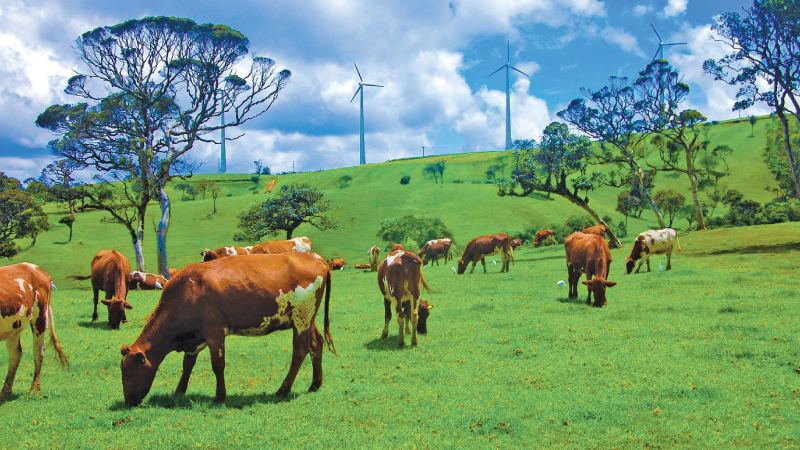The Government has partnered with the Government of India to support a national endeavour to improve milk production in the country, under the vision of President Ranil Wickremesinghe to make Sri Lanka self-sufficient in its food requirements.
Milk, which is an important nutritional requirement for children as well as adults, is largely an imported product in Sri Lanka with only about 40% of the milk requirement being met by domestic production. Milk product imports have led to an outflow of over USD 300 Million in foreign exchange from the country every year, on average,during the last 10 years.
With the objective of increasing milk produced by local farmers and driving more income back to the local economy, the Government of Sri Lanka reached an understanding with the Government of India to undertake a dairy development partnership to replicate India’s dairy success story in Sri Lanka.Subsequently, a Joint Declaration of Intent was signed by the two governments, during the President’s visit to India in July 2023.
India which is the largest producer of milk in the world, shares more similarities to the Sri Lankan dairying system than any other country in the world, given the resources available to farmers for dairying, socio-economic profile of the rural households, type of dairy animals, geographical and agro-climatic conditions.
As in India, a majority of the milk production in Sri Lanka originates from smallholder farmers. India, which was a milk deficit country 50 years ago, has now transformed to become a milk surplus country, which exports milk products to the world.India’s success story in milk production started in the 1950s under the leadership of Dr. Verghese Kurien who is known as the ‘milkman of India’, with regulatory support from the Indian Government.
India’s success in transforming its dairy industry is based on the key principle of ensuring the farmer receives the maximum income, with over 75% of the consumer price of a product going to the farmer, driving income back to the rural community.
A comparison of milk availability in India and Sri Lanka shows that Sri Lanka lags behind considerably. Sri Lanka’s milk availability per capita is only 150 grams/day compared to 444 grams/day in India.
India has recorded a substantial increase in milk production over the last two decades. India has achieved this success through numerous scientific interventions to its dairy system, including improved animal breeding and feeding measures and the digitalization of dairy system from farm to factory.
The interventions required to transform the dairy sector in Sri Lanka have already been successfully implemented in India at a much larger scale.
To replicate India’s success story in dairy, a joint venture company will be formed in Sri Lanka, consisting of two leading Indian institutions -the National Dairy Development Board of India (NDDB) andthe Gujarat Cooperative Milk Marketing Federation (GCMMF), better known as Amul.
They will partner with Cargills (Ceylon) PLC from Sri Lanka. The objectives of the joint venture company will includeimproving productivity of the dairy system, enabling the use of modern technology, equipment and best practices in dairy and associated sectors, achieving digitalisation in the dairy sector, improving the productivity of fodder/pasture cultivation and the cattle feed industry, improving animal health through accessible veterinary care practices, including efficient monitoring and immunisation, genetic upgradation of the animal herd, promoting capacity building and skill development through training programs for Sri Lankan farmers. It is envisaged that the project will increase Sri Lanka’s national milk production by 53% in five years, and double milk production (over 129% increase) in 10 years from its commencement. Over 200,000 farmers and entrepreneurs are expected to benefit from this project.
As part of the project, animals of high genetic merit will be distributed among smallholder farmers across Sri Lanka, which will increase yields of local dairy farmers. Smallholder dairy farmers will also benefit from access to semen doses, fodder and silage, training programs and knowledge sharing, vaccines, and food supplements.
The partnership will lead Sri Lanka towards self-sufficiency in milk production, reduce the country’s foreign exchange outflows on dairy imports, improve availability of milk for consumers, and uplift smallholder dairy farmers across Sri Lanka by driving income back to the local community.









